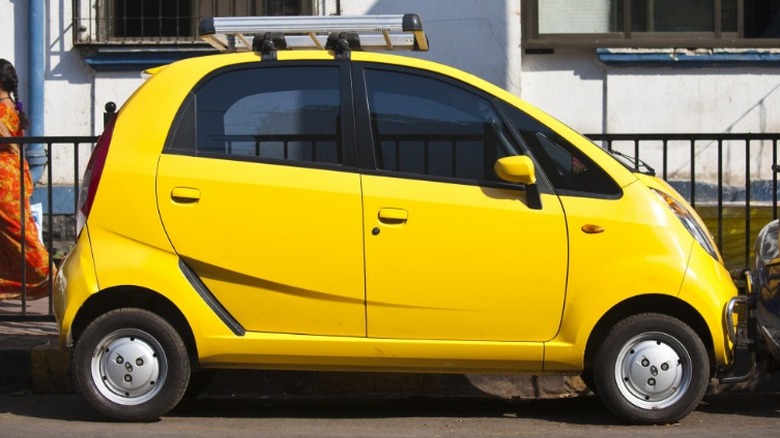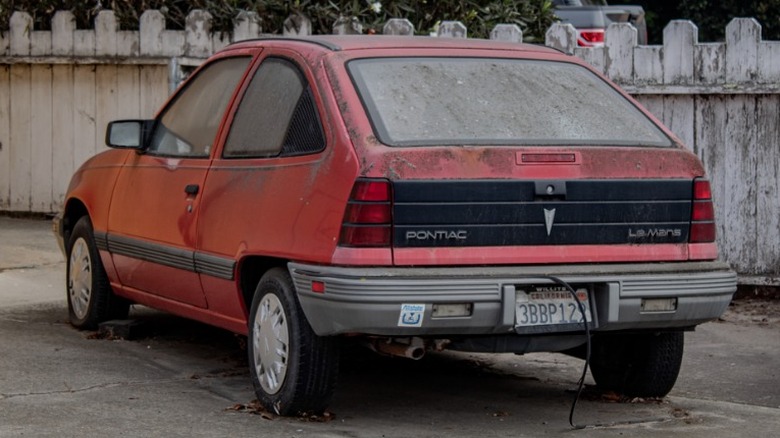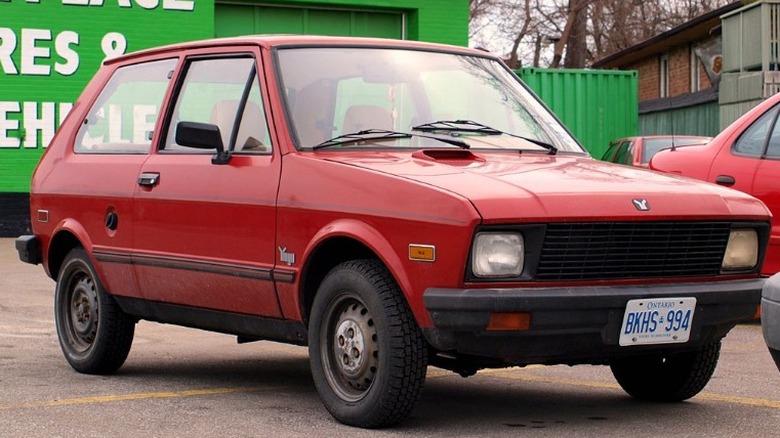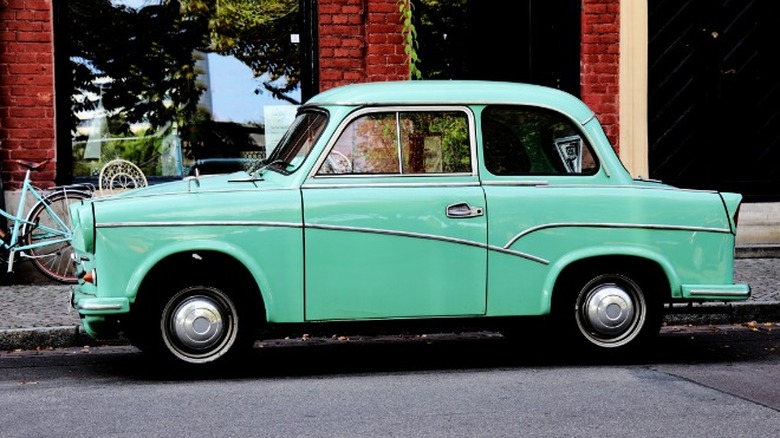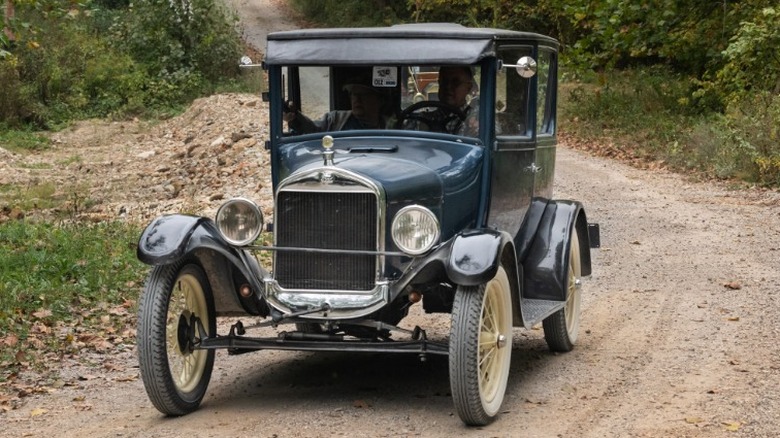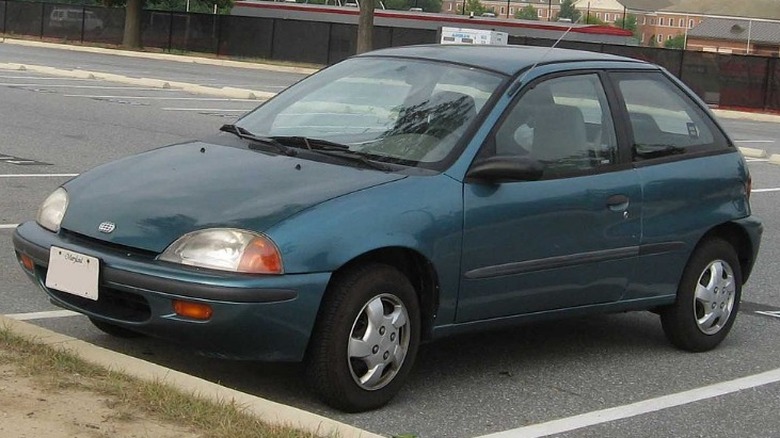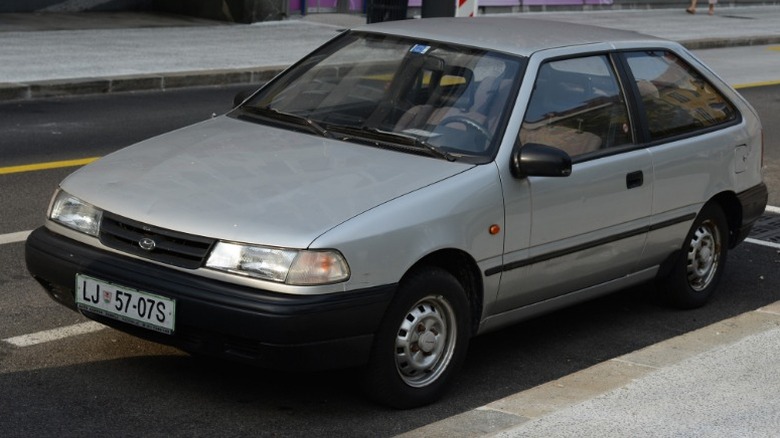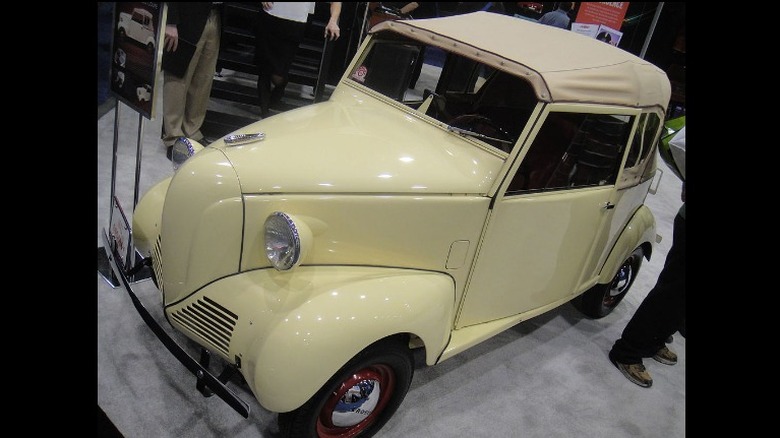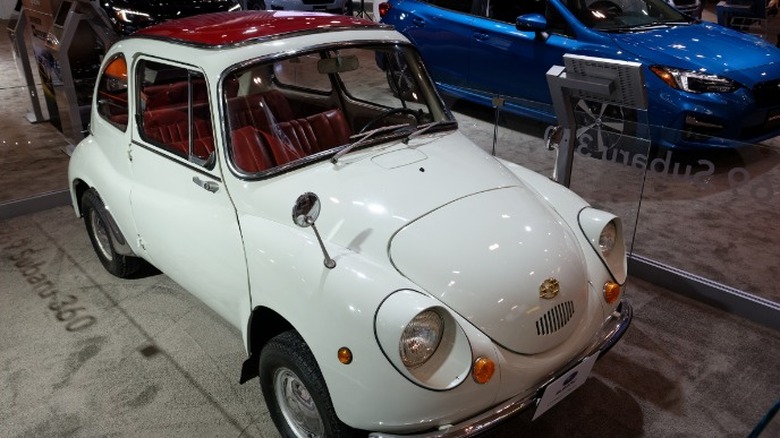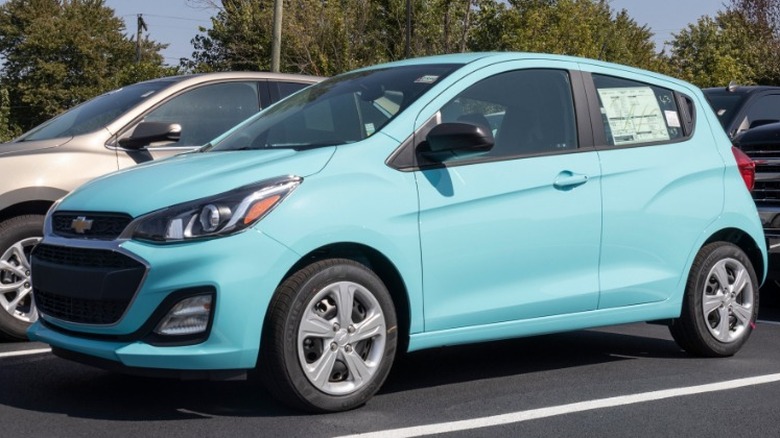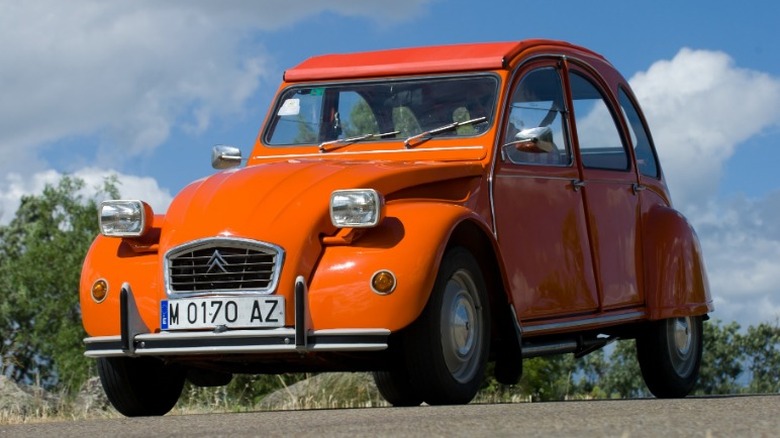The 12 Cheapest Productions Cars Ever Made
The invention of the automobile was a watershed moment that transformed society almost overnight. The ability of people to have fast personal transportation changed the pace of life, provided unprecedented opportunities for travel, and even altered the way in which cities would develop from that point forward. Initially, cars were only a luxury for the wealthy and remained so largely until Henry Ford introduced the automated assembly line, drastically lowering production costs that made affordable cars a possibility.
Since the heyday of the Model T, manufacturers continued to produce luxury cars available only to those with means, but also opened up a market for vehicles of a lower price point that could be bought by most middle-class families. The low-price automobile market is highly competitive and companies have tried many ways to offer a product cheaper than the competition. However, a race to the bottom often results in at least somewhat unsavory results. Many cars built to the lowest price point end up being terrible driving experiences and even worse for ownership. The quality and success of cheap cars is as varied as the industry at large. As a sort of retrospective of the frugal, barring the tiniest of near-useless micro cars and the plethora of obscure Chinese domestic market cars, these are 12 of the cheapest production cars ever made.
Tata Nano
India has a robust automobile industry and has been making mostly licensed copies of Western market cars and trucks since the end of World War II. One industrial giant of the Indian subcontinent is Tata motors, which licensed copies of Daimler-Benz trucks, per I Love India. Tata is one of the largest companies in India and it developed a car released in 2008 meant to be affordable for all Indians: the Nano.
The Nano was a concept conceived by the company's chairman, Ratan Tata. His idea was to create a car that would be priced low enough that families relying on motor scooters for transportation could step up to a full-fledged automobile. To sell for $2,500, it had to be cheap in every way. It only had a two-cylinder engine and accessories were sparse or non-existent. It had no trunk and the fuel filler was accessed through the hood. Steel was thin and flimsy and it rode on tiny 13-inch wheels. Every corner was cut and it showed.
Indians often use motor scooters to get their entire families around, riding with four and five passengers regularly. While a car just a bit more expensive than a scooter should have been enticing, sales were poor. It turns out, according to Autoweek, that even in a stratified developing country like India, appearances matter, and the Nano made them appear to be poor, so nobody wanted it. Looking back, it is probably good that plans to bring it to the U.S. were scuttled in 2012.
Pontiac LeMans
Pontiac has a long history of building large and comfortable cars, including its powerful muscle cars. One of its most popular models for decades was the LeMans. That rich history is the reason its sixth-generation model was nothing but a rebadged import from GM's Korean subsidiary, Daewoo. This car held no connection to previous models other than the name as it was front-wheel-drive, powered by an anemic four-cylinder engine, and a hatchback. For anyone who was a die-hard LeMans fan, this was the embodiment of disappointment.
It is hard to find much information about this car, probably because anyone who owned one has permanently blocked that time of their life. However, Curbside Classic has a fairly extensive look into the Australian version of the car, called the Opel Kadett E. The E probably stood for embarrassing. Included in the article is the 1995 Wheels Magazine Annual Quality rating, where it placed 19th out of 20. Chief among the complaints were huge panel gaps and terrible interior quality. The price in 1994 was $14,000, which was roughly $8,000 U.S. Although it was not the cheapest car in its day, it was very close to the bottom. And it should come as no surprise that it is included on MotorTrend's list of worst cars of the '80s, as it was sold in the U.S. from 1988 to 1993, which was probably five years too many.
Yugo GV
The communist-built Yugo automobile is the perennial punching bag of automotive journalists and enthusiasts alike. Its greatest contribution to the industry is being a punchline for bad car jokes. However, in its sheer awfulness, today it holds a special place of nostalgia and can be seen displayed by proud owners with a keen sense of irony.
When the Yugo first arrived on our shores, it represented a new choice for affordable transportation for those who would be agreeable to trade some conveniences for value. Options include AM/FM radio. That's it. Air conditioning was not available and the only power accessory was the engine starter. It was imported by Malcolm Bricklin, the man who brought the Subaru to America, who sought to have the car for sale below $4,000. With a wholesale price from Yugoslavia of $2,000, that is exactly what he did.
The Yugo party would not last long. Almost immediately, reports of poor quality and failed crash tests ripped its reputation to shreds. Nobody expected the cheapest car in America to be great, but they probably did not expect it to be as awful as it was. Despite the long tradition of blasting the Yugo as a truly bad automobile, recent sales show that low mileage examples of well-preserved cars can sell for an astonishing $7,500, nearly double the original price, proving the inherent value of good irony.
[Featured image by Michael Gil via Wikimedia Commons | Cropped and scaled | CC BY 2.0]
Trabant 601
Germany has long had a reputation for building the world's finest cars. However, there was a period during the Cold War when the eastern half of the country did not uphold the same standards. The German Democratic Republic was a socialist state that produced only a few models of automobiles, the most famous of which was the Trabant 601. Manufactured from 1957 to 1991, the little Trabant changed little throughout production and its assembly plant in the late '80s was as archaic and outdated as the car it produced.
The Trabant was powered by a two-stroke, two-cylinder engine that produced a mighty 18 horsepower sent through a four-speed transmission (via Motorpedia). Manufacturing costs were spared in every part of this car from its basic engine design to its lack of accessories. The body is manufactured from Duroplast, a type of plastic made from resin and recycled cotton, both for its low cost and due to lack of raw materials from Cold War-era economic isolation. The unintended benefit of the body construction is that it does not rust, but that is where the positive qualities end.
Despite Trabant's utterly cheap construction, buying one in the GDR was another story. The New York Times reported that good socialist comrades needed to cough up around $3,000, about a year's salary, to own one, but would have to wait up to 15 years before delivery. The Yugo is often derided as the world's worst car, but only because those capitalist pigs in the West have never seen a Trabant.
Ford Model T
When Henry Ford rolled the first Model T out of the factory in 1908, he kicked off a revolution in automaking, almost creating the idea of the affordable car single-handedly. While Ford is often erroneously credited with creating the first assembly line, the Model T plant was the first large-scale moving assembly line, according to Jalopnik. Still, the new Ford automobile was wildly successful and cars sold as fast as dealers could get them. The initial price of a Model T was a reasonable $850, but Henry Ford wanted it lower (via History Channel).
The success of the Model T had much to do with its simplicity and streamlined production. While its introductory price was already far lower than competing models that could not be built as fast, improvements to the assembly line allowed Ford to drop the price to a low of just $260, according to the Detroit Historical Society. Furthermore, this decline in price happened after Ford had done the unthinkable, raising wages to an astonishing $5 per day (via Yahoo! News). This wage was double the average at the time and was at least partly responsible for the high productivity of Ford plants.
The Ford Model T is not a cheap car in the way we tend to think in the modern day. It was inexpensive but reliable and durable. They were well-built and rugged, representing up to half of all cars on the road in its heyday, per Hagerty. But, in its day, it was the cheapest car around.
Geo Metro
GM has a long history of badge engineering, trading body panels and engines among half a dozen brands with different names and colors splashed across the hoods. In the '70s and '80s, competition from Japanese imports put a great deal of pressure on the automaking behemoth, and management needed to respond. Part of its response was the introduction of the Geo brand in the late '80s, consisting of rebranded Japanese imports sold through Chevrolet dealers next to Camaros and Caprices.
Among the cars was the Metro, a tiny economy car built by Suzuki, of which GM owned a part. The Metro was about as cheap a car as it gets. The body panels were thin and flimsy and the base model received a three-cylinder engine. The fuel mileage of these tiny little econoboxes was also fantastic, achieving up to 53 miles per gallon, per Curbside Classic. GM retired the Geo brand in 1997, but continued to sell the Metro as a Chevrolet until 2001 when it was replaced by the Aveo.
Despite its cheap reputation, the Metro was a reliable car. Suzuki has made small and dependable cars for decades. The consumer reviews for the 1997 model on Cars.com reveal many 5-star reviews singing the praises of the car, and only one detractor complaining of build quality, which is consistent with the universal fact that you cannot please everyone.
[Featured image by IFCAR via Wikimedia Commons | Cropped and scaled | Public domain]
Hyundai Excel
Today, Hyundai is a major player in the worldwide auto market and offers many excellent models, including some cutting-edge EVs. However, the road to get to this point has been long, and it started with the first Korean car sold in the United States, the Hyundai Excel. Starting in 1986, Excels began selling across the country boosted by a robust ad campaign driving home the low-cost message. At just under $5,000, it undercut the Japanese competition with a car that was fundamentally similar and even included Mitsubishi hardware built in Korea (via Old Motors).
The Excel began as the Hyundai Pony, changing names before being exported, and was the first original car design from a Korean company. For the first three years, it was the only car from Hyundai, and it could be had with several options such as automatic transmission, air conditioning, and cruise control. The trouble with the Excel is that within a year or two, troubles started popping up. Widespread reports of poor build quality tarnished the brand's image and led directly to Hyundai's later introduction of the 10-year, 100,000-mile warranty, an industry first. Finding one today could be a chore as they were mostly seen as disposable cars. At the time of writing, not a single example is listed nationwide on Autotrader.
Crosley Convertible
Most young people today may only know the Crosley name for a line of terrible and cheap record players and novelty radios. But it was an automaker at another time, with the name changing hands over the years to eventually have little to no connection to the original company.
Powel Crosley Jr. had a successful career manufacturing radios and refrigerators in the '20s and '30s, but had always had a thing for automobiles. He later turned his passion for automobiles toward creating a new American people's car and releasing it for sale in 1939. It was a tiny affair powered by a 2-cylinder engine and panned just 80 inches from wheel to wheel. Bodywork was about as basic as it comes and the roof was a removable canvas top. It was no barnburner at first, selling just over 2,000 vehicles, but the automobile company would stick around until 1952 (via How Stuff Works).
While the original Crosley would spawn a moderately successful company that created some memorable models of small cars through the '50s, the first one got the ball rolling for a bargain price of around $300.
[Featured image by Pop Culture Geek via Wikimedia Commons | Cropped and scaled | CC BY 2.0]
Subaru 360
The name Subaru is recognizable to nearly any American asked. But that has not always been the case, and the company's first exposure to the American market began in the late '60s. The Subaru story in the U.S. did not start with a car, but a scooter called the Fuji Rabbit. Fuji Heavy Industries is the parent company of Subaru, and it had been exporting scooters starting in 1957 to San Francisco, per Lane Motor Museum. As Rabbit production was beginning to be phased out, Malcolm Bricklin managed to secure an exclusive contract to bring over Fuji's next project, a tiny basic car called the Subaru 360.
It was named for the size of the engine, a scant 360cc. The car is a bubbly-looking oddball and was way too small for American roads, especially with the giant cars of the day whizzing past, making the car feel decidedly unsafe. The 1969 Consumer Reports review, according to CNN, claimed the Subaru was about as unsafe as a car can get, saying an evasive maneuver at 55 mph to avoid an accident would likely be the cause of one.
Subaru got off to a rocky start in the U.S. While it touts its cars as capable and versatile today, the main selling point back then was its cheapness. Print ads in its day proclaimed of the little 360 that, "Cheap and Ugly does it." The original retail price of $1,297 is just under $10,000 today and nearly half of a contemporary Volkswagen (via Hagerty).
Chevrolet Spark
Creating a list of cheap cars could seem incomplete without including the cheapest car on sale at the time of writing, and that would be the Chevrolet Spark. As a spiritual successor to the Geo Metro, the Spark is a product of the GM division in Korea but will be discontinued after the 2022 model year, according to GM Authority.
Despite being the cheapest car on sale in the U.S., Car and Driver rates it with fairly high marks, saying the worst things to be said of it are about its cramped rear seat and subpar folding mechanism. While the engine lacks power at highway speeds, it is sufficient for city traffic and performs adequately when kept in this environment. It was never going to be a highway cruiser to begin with. Unlike the bare-bones stripper models that make up most entries into this list, the Spark benefits from modern manufacturing and standards, offering a relatively comfortable cabin with ample technology. The biggest letdown would be the CVT, and it is recommended to opt for the 5-speed manual.
Things have changed drastically for cheapo cars over the years, going from unbearable death traps to cars with a size that is only a relative inconvenience today. That said, the days of the car, at least in North America, are numbered as the crossover and SUV take the reins across the spectrum of manufacturers.
Volkswagen Type 1
Nobody said that a cheap car must be a terrible one, and the Volkswagen Type 1 Beetle is proof. Created before WWII and put into production under British management after the war, the VW Beetle went on to be one of the best-selling cars of all time, according to Autoweek. They are basic, small, and austere, but dependable, capable, and enjoyable cars to many.
The genesis of the car was in the idea of producing a "people's car" for the German public, something the average German could afford to buy and use on the newly laid Autobahn highways. With plans interrupted by the war, German industry had been decimated and also needed economic activity to rebuild. Volkswagen commenced production to get its people behind the wheel, but also exported the cars to increase much-needed trade, and it became a success (via Hemmings).
In developed markets where the VW sold, it was often the cheapest car available. Thanks to its simple design and robust engine, people took millions of them home, even creating subcultures of fanatical drivers, and it continued to be made in 2003 in Mexico.
Citroën 2CV
Like the Germans, the French needed to get their ruined economy back on track and provide affordable transportation to the people. French automaker Citroën also had plans that were scuttled before the war for a cheap and robust people's car, and had already manufactured some by 1939.
The idea to build a low-cost car stems from the idea that Citroën could build a car cheap enough to replace the horse and cart for farmers in the countryside. A car that was exceedingly simple, easy to repair, and robust would be popular among the many winemakers and dairy farmers across France. One requirement of the car was said that it should also be able to traverse a plowed field with a basket of eggs without breaking any (via Belle France). And so, the 2CV was born.
While this car takes advantage of many low-cost elements such as a simple air-cooled engine and flat body panels, the suspension is an ingenious solution that works remarkably well. All four wheels are suspended on swingarms to the front and the rear that are then connected to tubes on either side of the car with springs inside (via Silodrome). This allows for ample travel and the opposing forces from front to rear even out travel, creating a comfortable ride with excellent handling.
Citroën's 2CV continued production for decades until it was finally retired in 1990. It helped get post-war France back on the road and led to its establishment as the modern and sophisticated society it is today.

